FOR IMMEDIATE RELEASE
CONTACT: Jessica Zigmond
202.393.6700, ext. 101
jessica@nabh.org
WASHINGTON, DC (August 9, 2018)— The National Association for Behavioral Healthcare (NABH) today released Pathways to Care: Treating Opioid and Substance Use Disorders, a white paper that offers practical and applicable approaches to fixing America’s frayed substance use disorder treatment delivery system.
In 2016, more than 20 million individuals in the United States had a substance use disorder (SUD), and 89 percent of individuals who needed treatment did not receive it. This is known as the treatment gap, and it exists for individuals with all types of SUDs, including opioid use disorder. The treatment gap is literally killing us and reducing life expectancy in the United States.
The current system is characterized by limited integration between specialty addiction care and the general medical community; low use of evidence-based practices; poorly organized services that often confuse the public; limited, inconsistent, and unpredictable financing; and insufficient workforce capacity to meet consumer demand.
The good news is the United States has highly skilled clinicians and first-rate health systems and programs to treat people with SUDs. Now we need to improve access to those providers and services.
“As we build a better system to address the opioid crisis, we must look to strengthen and sustain the entire system of care,” Sarah A. Wattenberg, director of quality and addiction services at NABH, writes in Pathways to Care. “Only then will we realize our full potential—and save lives in the process.”
Wattenberg’s paper is a landscape review that presents information about unhealthy substance use and how the delivery system often fails to connect people to treatment; provide the correct evidence-based services; monitor patient recovery during and after treatment; and re-engage patients whose symptoms recur.
Along with the paper, NABH released a Pathways to Care provider checklist, an infographic that identifies key Pathways milestones, and shareable graphics to post on Twitter and LinkedIn. To access these materials, please visit www.nabh.org/pathways. Also be sure to follow us on Twitter (@NABHbehavioral), LinkedIn, and YouTube.
To schedule interviews with Sarah A. Wattenberg, please contact Jessica Zigmond using the contact information at the top of this news release.
###
About NABH
The National Association for Behavioral Healthcare (NABH) advocates for behavioral healthcare and represents provider systems that are committed to delivering responsive, accountable, and clinically effective prevention, treatment, and care for children, adolescents, adults, and older adults with mental and substance use disorders. Its members are behavioral healthcare provider organizations that own or manage more than 1,000 specialty psychiatric hospitals, general hospital psychiatric and addiction treatment units and behavioral healthcare divisions, residential treatment facilities, youth services organizations, and extensive outpatient networks. The association was founded in 1933.

